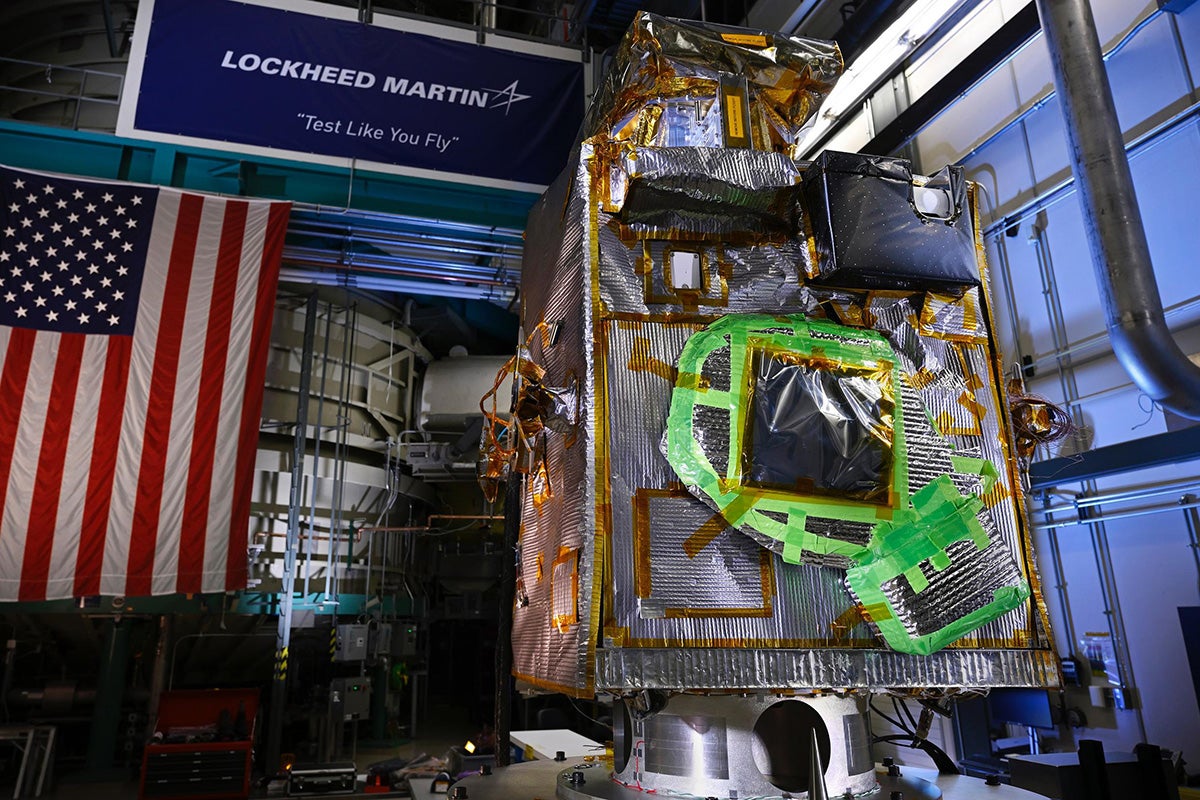University of Central Florida planetary scientist Kerri Donaldson Hanna is counting the days until NASA’s Lunar Trailblazer mission launches from Cape Canaveral and begins its journey to search for water on the moon.
The Lunar Trailblazer spacecraft, set to launch in March 2024, has been undergoing final preparations and testing with Lockheed Martin in Littleton, Colorado, for it to be shipped to Florida to be integrated into SpaceX’s Falcon 9 rocket.
Once orbiting the moon, Lunar Trailblazer will use multiple instruments to create high-resolution maps of water ice deposits on the moon. Ice will be a critical resource for lunar and space exploration and may be used to provide hydration for astronauts and fuel for spacecraft.
Donaldson Hanna’s research group will be using observations from the spacecraft’s Lunar Thermal Mapper (LTM), an imaging radiometer onboard Lunar Trailblazer, to map areas on the lunar surface that are cold enough to retain water ice, and to better understand how the crust of the moon originally formed and evolved over time — including how lunar volcanism works and has changed over time.
“Both instruments on Lunar Trailblazer, LTM and the High-resolution Volatiles and Minerals Moon Mapper (HVM3), have better spatial and spectral resolution than has flown before, so we will get unprecedented spectral maps of the lunar surface allowing us to answer key questions about the moon and perhaps even identify new puzzles to be solved with future surface missions,” Donaldson Hanna says. “And we will also be using Lunar Trailblazer observations to better characterize the Gruithuisen domes in preparation for our Lunar-VISE mission in early 2027.”
Collective Endeavor
Caltech planetary sciences Professor Bethany Ehlmann is the principal investigator of the mission while the Jet Propulsion Lab (JPL) in California will manage the flight mission for NASA. Lockheed Martin is providing the spacecraft. JPL is providing the HVM3, a visible-shortwave infrared imaging spectrometer, and the University of Oxford is providing the Lunar Thermal Mapper, a thermal infrared imaging radiometer.
Lunar Trailblazer had final assembly and testing at Lockheed Martin, including thermal vacuum chamber testing. Now that all instruments have been installed, the spacecraft is undergoing final system-level testing.
“It is fulfilling to see all of the hard work pay off in getting the instruments built and delivered to Lockheed Martin,” Donaldson Hanna says.
Researcher Credentials
Donaldson Hanna has a bachelor’s degree in space sciences from the Florida Institute of Technology, and a master’s degree and doctorate in geological sciences from Brown University. Donaldson Hanna also conducted research within the Atmospheric, Oceanic and Planetary Physics sub-department at the University of Oxford before receiving a UK Space Agency Aurora Research Fellowship to continue her research at Oxford. While at Oxford, she held a junior research fellowship at Christ Church College and was awarded the early career Winton Capital Geophysics Award from the Royal Astronomical Society. Donaldson Hanna joined UCF in March 2019 where she is an associate faculty.




